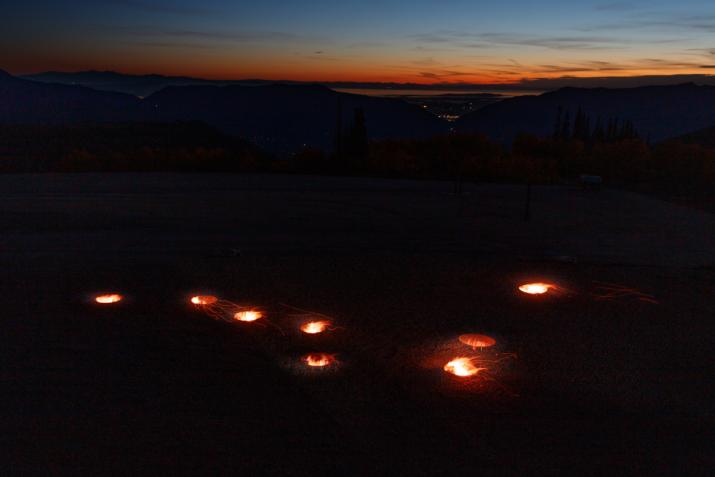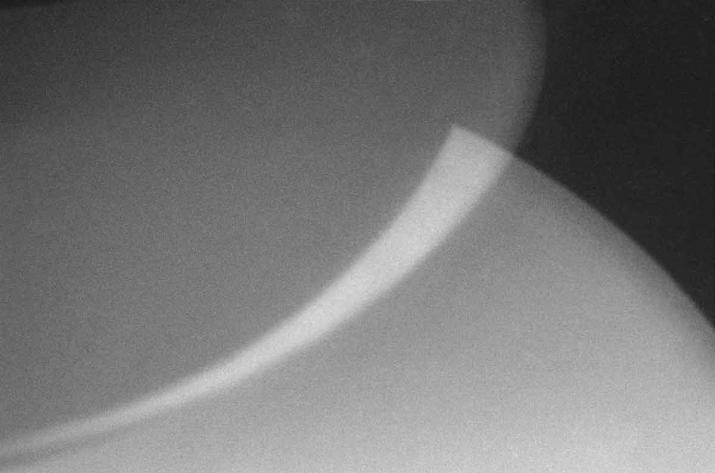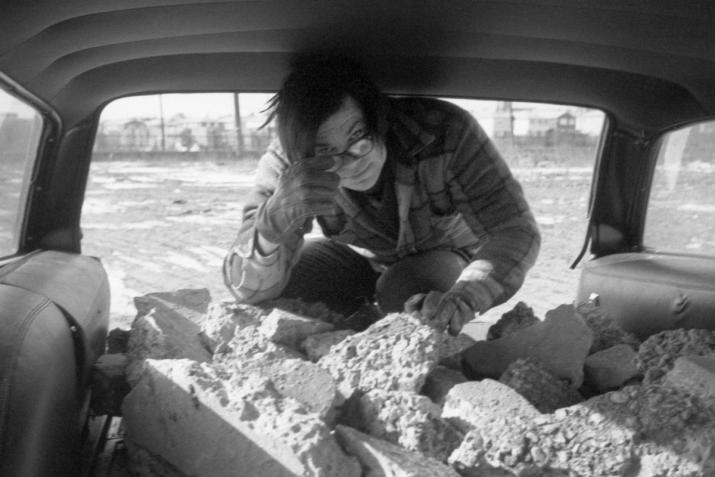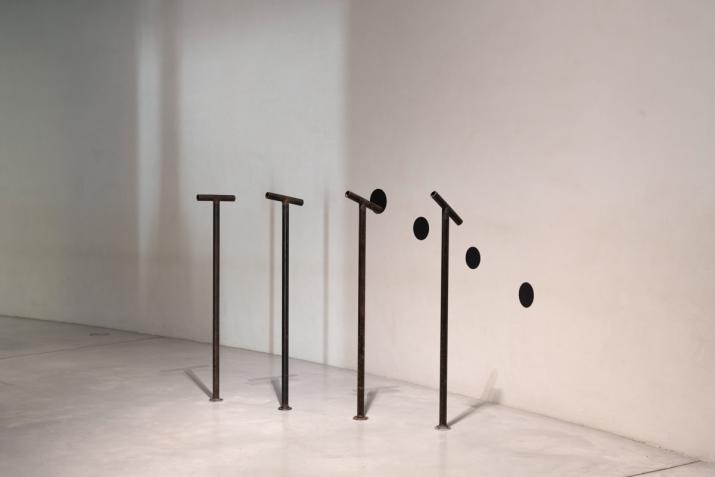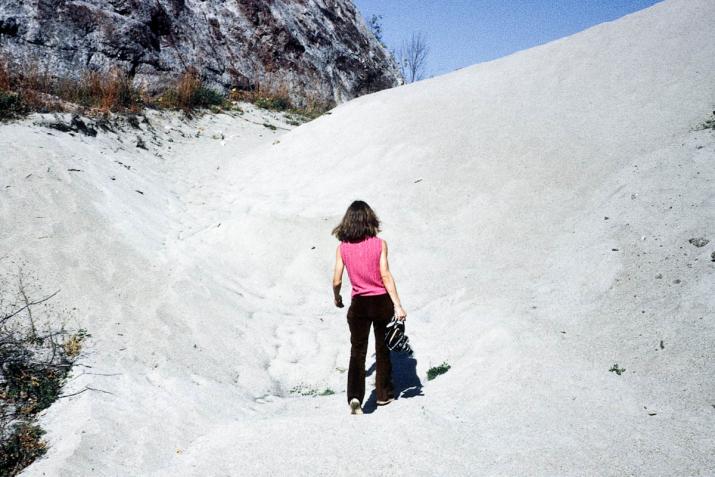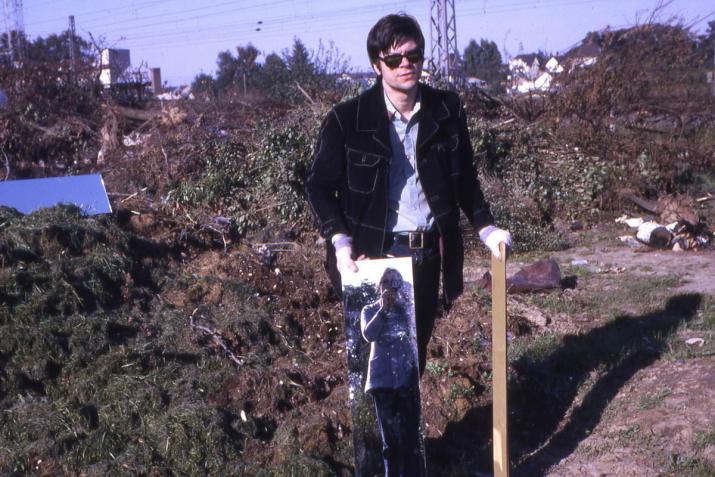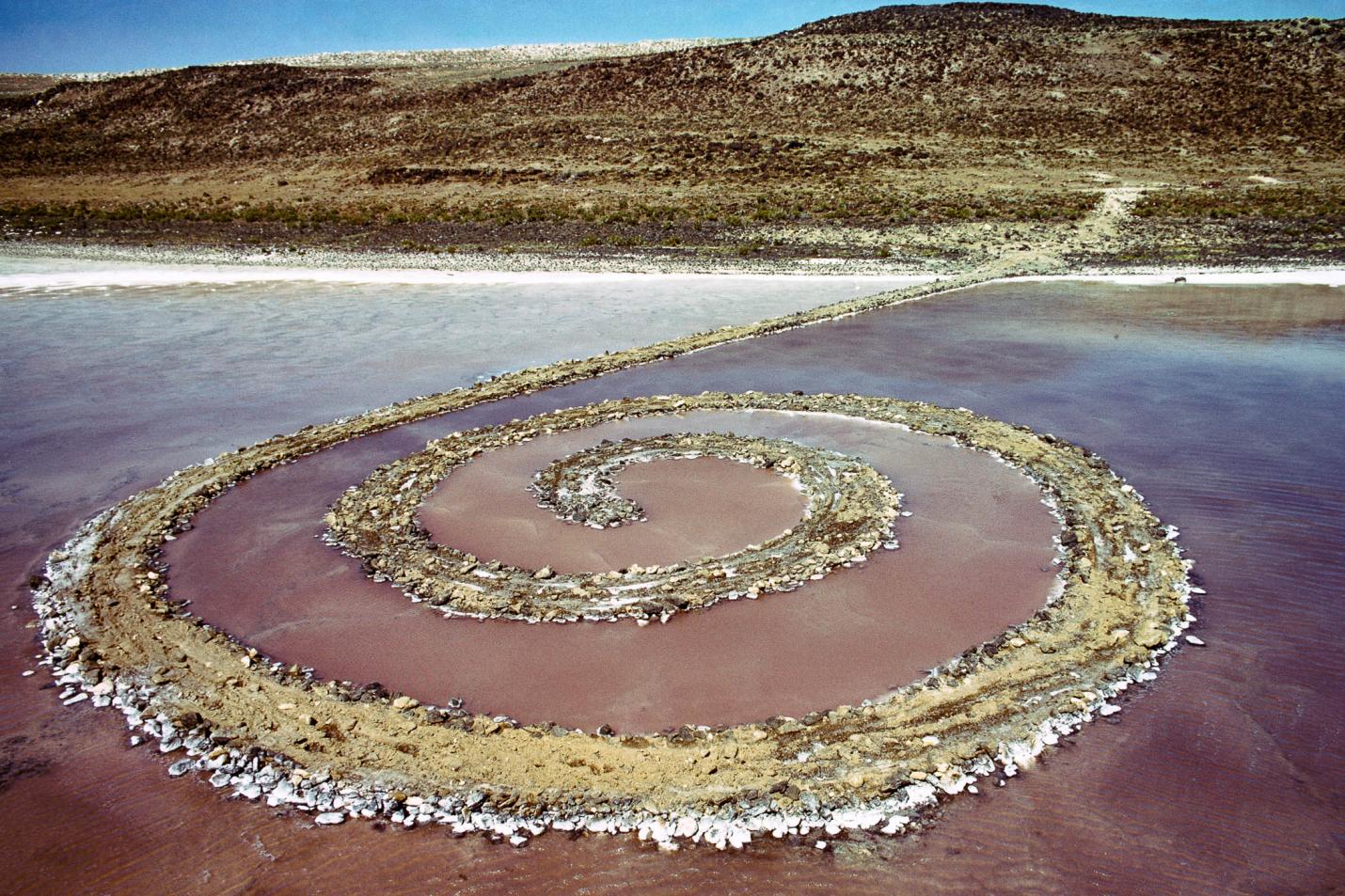

Robert Smithson's Spiral Jetty named to National Register of Historic Places
We are pleased to announce that Robert Smithson's landmark earthwork Spiral Jetty (1970) has been added to The National Register of Historic Places.
The National Register of Historic Places is the National Park Service’s official list of the historic places worthy of preservation. Authorized by the National Historic Preservation Act of 1966, the National Register of Historic Places is part of a national program to coordinate and support public and private efforts to identify, evaluate, and protect America's historic and archeological resources.
Spiral Jetty is a testament to Smithson’s enduring fascination with entropy. Smithson created the earthwork in the spring of 1970 at Rozel Point, on the shore of Utah's Great Salt Lake. Constructed from 6,650 tons of rock and earth gathered directly from the site, the spiral continuously changes form as nature, industry, and time take effect. Today Spiral Jetty exists as a distributed sculpture through the various media Smithson used to articulate his ideas: the earthwork in Utah, a 16mm film, numerous drawings, and an essay published in 1972.
In 1999 Nancy Holt and the Estate of Robert Smithson donated the earthwork to Dia Art Foundation, who continue as stewards. Dia works to preserve the artwork for visitors today and future generations through partnerships with Holt/Smithson Foundation, Great Salt Lake Institute at Westminster College, and the Utah Museum of Fine Arts, and support from Utah Division of Forestry, Fire and State Lands.
“We are delighted that Spiral Jetty has received this important recognition, which will help us spread awareness of the iconic artwork and advocate for its long-term preservation,” Jessica Morgan, Director of Dia said in a statement. “In the fifty-four years that Spiral Jetty has existed, it has been both submerged by the Great Salt Lake and stood far from the lake front, bearing witness to the changing landscape around it. Beloved in Utah and far beyond, this artwork has come to mean many things to many people, and we are proud to continue our work caring and advocating for Spiral Jetty to preserve it for generations to come.”
In 2024, fifty-four years after it was created, Smithson’s Spiral Jetty has become a barometer for the climate emergency. Over its half-century lifetime, Spiral Jetty’s visibility and relationship to the site have changed as the waters of the lake have risen and then dropped following years of sustained drought and water diversion. The current water level of the Great Salt Lake is at its lowest since records began.
To learn more about visiting Spiral Jetty visit the Dia Art Foundation website.
Robert Smithson, Spiral Jetty (1970)
Great Salt Lake, Utah
Mud, precipitated salt crystals, rocks, water
1,500 ft. (457.2 meters) long and 15 ft. (4.6 meters) wide
Collection of Dia Art Foundation
Photograph: Gianfranco Gorgoni, 1970
© Holt/Smithson Foundation and Dia Art Foundation / Licensed by Artists Rights Society, New York
